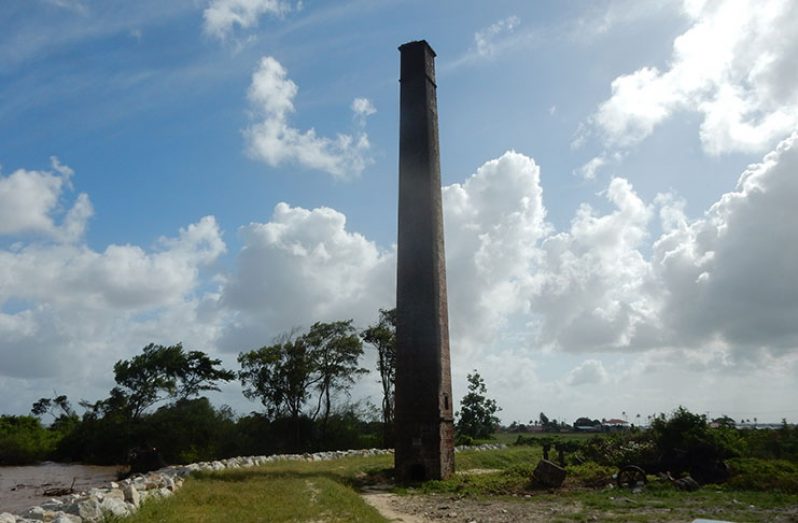By Mohamed Khan
OUT of the 37 sugar plantations on the Essequibo Coast, Mr Clarke’s plantation Aurora was the finest one in 1869. It was later amalgamated with Spring Garden in 1876. However, it did not remain for long under canes.
It became a mere grazing ground for the cattle of the time-expired Indian immigrants from 1880. Africans slaves were brought on the first slave ship to work on this plantation, and then Indian immigrants joined them until slavery ended.
The leaders of the African slaves then bought Good Hope and settled there .The chimney which was built by the British in 1905, is still standing there near to the seashore, marking the site where sugar works once stood.
This estate realised a fair fortune within its short term of operation. It was an old Muscovado estate with common processing machinery. It produced 1,170 tonnes of sugar with acreage of 714 in canes, 12 acres in plantains and 241 acres uncultivated.
It had a population of 243 creoles or African, and 306 unindentured and indentured Indians. There is still a large area of fertile land available for any description of cultivated produce, unsurpassed by any on this fertile coast. The plantain disease was proving to be a scourge of the peasantry in the second half of the 19th century.
The state of Aurora estate is not only a standing example of what it has degenerated to, but for intelligent, forethought of those who fought the battle of immigration and slavery.
After the amalgamation of Aurora and Spring Garden, Mr Clarke set up a set of vacuum – pan machinery which superseded the old Muscovado-type ones mainly because of the English tariffs which discouraged the import of high-quality raw sugar.
But it had some setbacks of labourers at reasonable rates, difficulty in drainage and shipping with sea and erosion threatening the narrow dam.
Mr Clarke then decided to make an advertisement for a certain number of thousands of tonnes of rock- stones to make a barrier from the sea and land.
The colonial civil engineers have expended large sums in an attempt to defend the adjoining property and the Neptune system of well-bound groynes in timber was used to keep out the sea. But the ocean still kept forcing itself on the narrow strip of sea defence dam.
TRADING POINT
The estate was located near the Essequibo River bank for easy access to shipping of its sugar, rum and molasses. It boasted the finest cane lands in the colony of British Guiana during the 18th century. The very fine mixed soils of sandy loam and shell which crop out on the coast in front of Aurora helped to make it one of the most salubrious places.
The chimney was constructed of red bricks on a huge concrete base by a bricklayer from England named Gordon, and it served as a beacon to ships approaching the 37 sugar estates on the Essequibo Coast.
When sugar cultivation came to an end, the estate became the home of Bobby, Indira and Krishna Misir. The new owners cultivated the land immediately around their neat ranch-style buildings. The comfortable homesteads with vegetable garden, flowering trees and fruits trees of all kinds attached formed a truly pleasant sight. Much has been written about the perils of sugar dependency on the Essequibo Coast. The Dutch introduced sugar here in the 17th Century and almost all the agricultural land under rice cultivation was once under cane.
The tall brick chimney and wheels of the sugar mill abandoned in 1876 are still standing there. Indra Misir told me that she will keep the surrounding of the chimney clean each day; the family continues to preserved this place since it was bought by Bobby Misir senior.
They want it to remain one of Essequibo’s heritage sites, but need Government input for the young generation and visitors to see and learn of its history. The fragile sea dam was lately repaired by BK International to keep the sea out. This village has a population of 3000 people, the majority of whom are East Indians and are rice farmers. It has shops, a police station, post office, two new primary and nursery schools and a health centre. The Pomona/Good Hope NDC office is also in Aurora.




.png)









